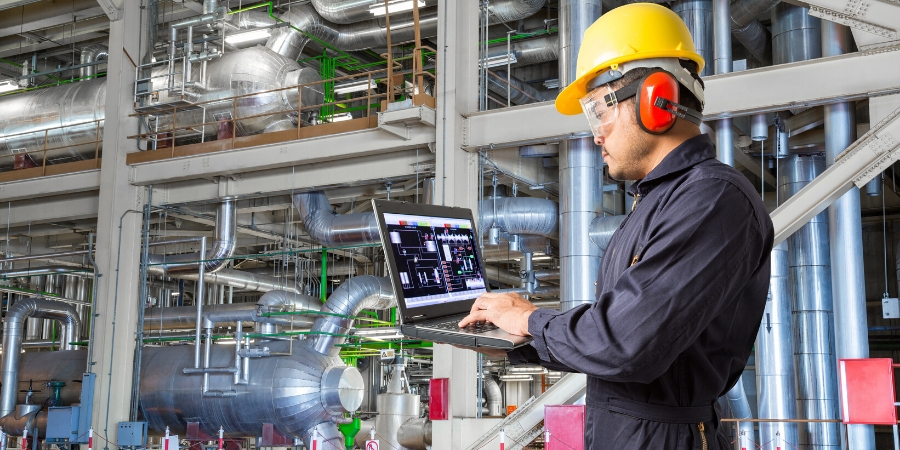For more than a decade, the oil and gas industry has spoken about the promise of digital transformation. Yet, the reality on the ground—and in the fields—shows a sector still constrained by legacy systems, high operating costs, and avoidable risks. Today, however, Digital Oilfield (DOF) technologies are finally reaching the maturity, affordability, and interoperability required to address the industry’s most pressing problems.
Below, we examine the key industry challenges and how DOF architectures, intelligent automation, and next-generation edge/cloud platforms offer pragmatic, high-ROI solutions.
1. The Connectivity Gap: 70% of Wells Still Offline
Despite the industry's sophistication, the majority of the world’s wells are still not connected, not instrumented, and not monitored in real time. This lack of visibility restricts optimization, limits production, and forces operators into reactive operating modes.
How DOF Technologies Solve It
-
Low-power, low-cost IoT sensors (pressure, temperature, vibration, flow, ESP analytics) are now deployable even in remote brownfields.
-
LPWAN, mesh networks, and satellite IoT enable connectivity without expensive infrastructure.
-
Edge compute devices compress, validate, and send data efficiently—even when bandwidth is limited.
The result: A fully connected asset ecosystem achievable at a fraction of the historical cost.
2. Production Loss in Artificial Lift Wells: A 10%+ Avoidable Problem
Artificial lift systems remain the backbone of global production, yet production deferment from mechanical failures, gas-lock events, scale buildup, pump-off, and operational stoppages is still widespread. Many operators still rely on manual intermittent checks, causing failures to go undetected for hours or days.
How DOF Technologies Solve It
-
AI-driven lift optimization (ESP, PCP, rod pump, gas lift) detects anomalies earlier than humans.
-
Predictive maintenance models forecast equipment failures with high accuracy.
-
Remote restart and control systems reduce downtime from hours to minutes.
-
Smart production surveillance dashboards combine SCADA, historians, alarm systems, and well models into a single pane of glass.
Operators consistently report 5–12% production recovery when modern DOF systems are implemented on lift-dependent fields.
3. Operational Staff Burden: Excessive Field Visits
Most O&G operations still depend on large field teams for daily rounds, manual gauge readings, valve operations, and ad-hoc maintenance. These activities are time-consuming, costly, and often inconsistent.
How DOF Technologies Solve It
-
Remote operations centers (ROCs) allow centralized well monitoring for hundreds or thousands of wells.
-
Automated workflows and digital procedures replace manual checks.
-
Real-time anomaly detection reduces the need for routine visual inspections.
-
Robotics and autonomous drones perform visual monitoring in challenging terrain.
The outcome is leaner operations, safer work environments, and consistent high-quality decision-making.
4. Safety Challenge: More Than 90% of Accidents Occur on the Road
A major—but often underappreciated—industry risk lies not in process operations but in driving to the fields. With large geographic footprints and limited remote visibility, companies deploy personnel for tasks that can now be automated or centrally managed.
How DOF Technologies Solve It
-
Remote monitoring and tele-operations dramatically reduce the number of required site visits.
-
Automated alerts allow intervention without dispatching personnel.
-
Digital twins and virtual inspection tools allow engineers to analyze systems remotely.
Companies that deploy DOF tech consistently reduce field travel by 50–80%, directly lowering accident risk.
5. Legacy Automation Systems: Expensive, Outdated, and Hard to Scale
Many of today’s SCADA and automation solutions were designed more than 20 years ago. They are expensive to maintain, require specialized support, and are often incompatible with modern cloud/edge technologies.
How DOF Technologies Solve It
-
Cloud-native SCADA platforms eliminate the need for heavy servers and legacy HMIs.
-
Open protocols and MQTT architectures allow rapid integration with any device or vendor.
-
Digital historian systems are now scalable, efficient, and cost-effective.
-
Modular, plug-and-play hardware reduces installation and maintenance requirements.
This translates to lower CAPEX, lower OPEX, and much faster deployment cycles—from months to days.
6. A Decade Without Real Automation Breakthroughs—Until Now
The industry has long awaited a "game changer" in automation. While the last decade focused on incremental improvements, today’s DOF technologies represent a true step change:
-
Real-time AI-based optimization of thousands of wells simultaneously
-
Digital twins for production systems, networks, and facilities
-
Autonomous control loops and smart exception-based surveillance
-
Zero-touch deployments using standardized IoT and edge devices
For the first time, the DOF vision is not only technically feasible but economically compelling.
The Digital Oilfield Is No Longer a Concept—It Is an Operational Imperative
Companies adopting DOF architectures experience:
-
10–20% reduction in OPEX
-
5–12% production gain in AL wells
-
50–80% reduction in field travel
-
Significant HSE improvements
-
Enhanced asset reliability and equipment life
-
Rapid ROI (often < 12 months)
In an industry increasingly defined by efficiency, environmental responsibility, and safety, Digital Oilfield technologies deliver measurable, transformative impact.
Conclusion
The oil and gas sector stands at a crossroads. The challenges it faces—low connectivity, production deferment, safety risks, high operating costs, and aging automation systems—cannot be solved with yesterday’s technology.
Digital Oilfield technologies offer a clear, proven, and highly scalable pathway forward.
They are not just enhancing operations—they are reshaping the future of the upstream industry.







